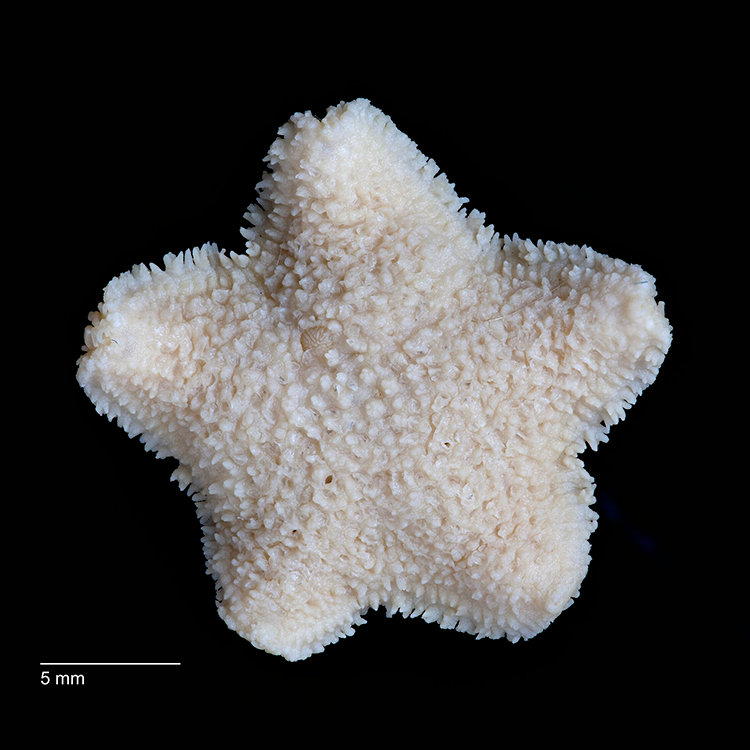Derwent River Seastar

Community type
Habitat type
Rocky reefs, kelp beds and inter-tidal zone
The Derwent River Seastar is a small seastar up to 17 mm across. The species usually has five arms and is a rounded pentagonal shape. It is bluish-greenish-brown on the upper (dorsal) surface, bordered by off-white around the outer edge. The under parts are off-white while the epidermis of the upper surface exhibits brown pigmentation around the base of the spinelets. It lives in rocky, shallow waters in the mid-littoral zone in waters between 0–1.5 m depth.
This echinoderm was first collected on the shore near the Tasman Bridge in Hobart in 1969 – and only found four more times in the Derwent Estuary, all in the mid-estuary.
In 2009 the Derwent River Seastar was federally declared Critically Endangered, and in Tasmania noted as possibly extinct. This did not stop a long-running debate of whether the Derwent River Seastar was in fact its own species. To settle the question once and for all, Tasmanian scientists in 2018 joined a team at Museums Victoria that used non-invasive X-ray computed tomography (similar to CAT-scan) to study the holotype specimen (the one that designated the species) and confirmed that yes, it is indeed a unique species. The species confirmation was based on the discovery of internal ossicles (ear bones) that strengthened the disc margin. This detail could not be seen without dissecting the specimen, which was too precious, but the scan picked it up.
The new findings moved the species into another genus than originally thought. The correct name is now Patiriella littoralis, and not as previously named Marginaster littoralis.
